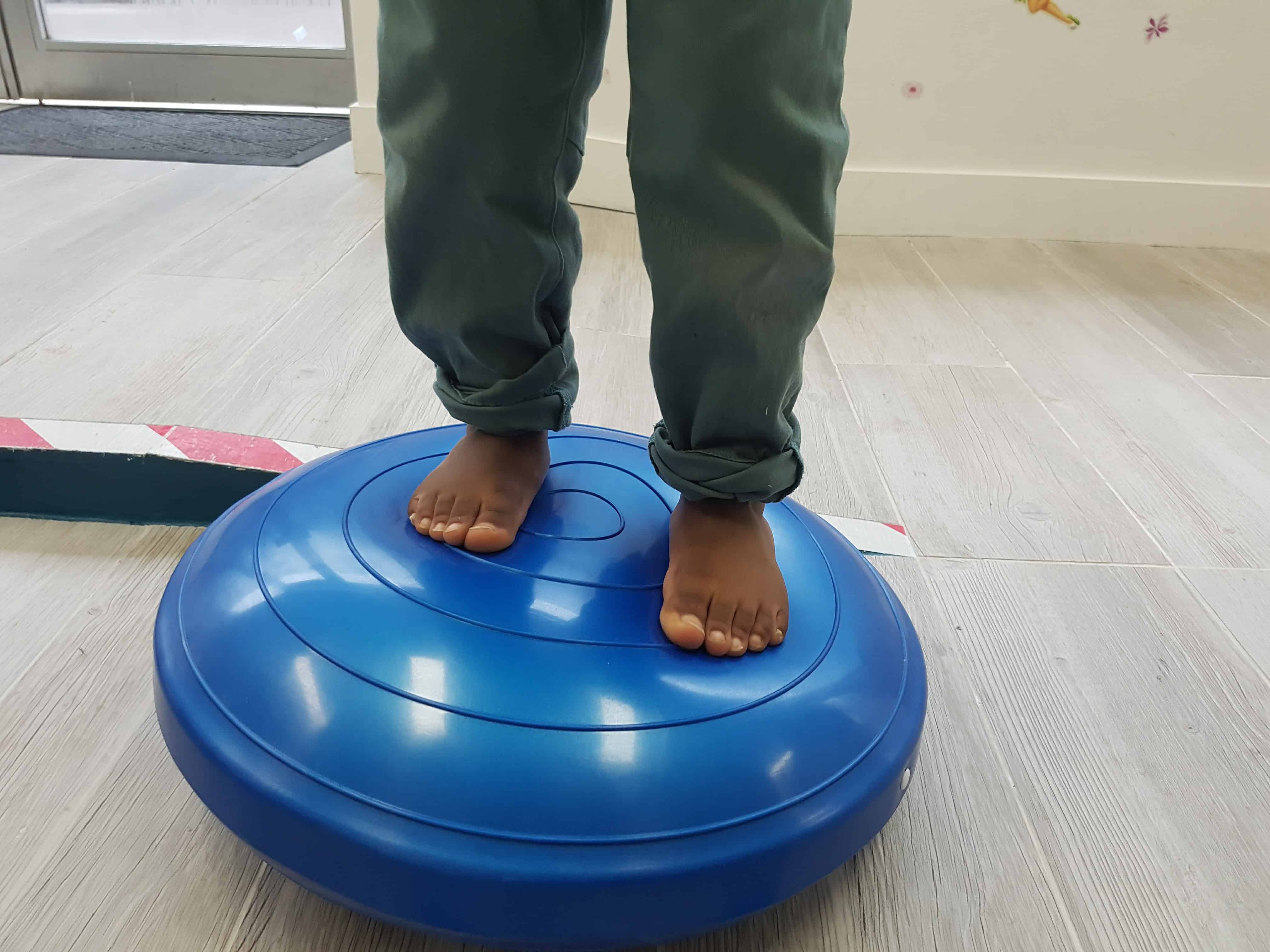Have you heard about the wobble board? These unique fitness tools have gained popularity in recent years for their ability to: 1.) engage multiple muscle groups, 2.) improve overall body control.
Consider this a sign to take your workouts to the next level with this one! To learn more about it, join us as we explore its design, benefits, and usage tips.
Gym Wobble Boards
Gym wobble boards are specialised fitness equipment designed to improve the following:
- balance
- stability
- core strength
These boards consist of a circular platform with a rounded or convex bottom surface. The unstable base creates an unstable environment. This challenges the user to engage their core muscles and maintain balance.
Gym wobble boards are commonly made from durable materials like wood or plastic. To ensure safety, they often feature non-slip surfaces. They are widely used in fitness centres, gyms, and physical therapy clinics. Today, even in-home workout routines to enhance overall body control and coordination.
Design and Structure
 (Image Credit: Wikimedia Commons)
(Image Credit: Wikimedia Commons)
Wobble boards feature a sturdy platform that can vary in size, shape, and material. The platform is designed to provide a stable surface for standing or doing exercises. Meanwhile, the base remains unstable.
As mentioned, the bottom surface of a wobble board is usually rounded or convex. It can tilt in different directions, creating an unstable environment.
Different types
Wobble boards are available in various types to cater to different needs. Wooden wobble boards are a popular choice, known for their durability. Plastic types offer lightweight and portable options, making them convenient for home use. Inflatable ones, in contrast, provide a unique option. For one, the level of instability can be adjusted by inflating or deflating the board.
Sizes and shapes
Wobble boards come in a range of sizes and shapes. Circular wobble boards offer 360-degree movement and are commonly used for balance training. Rectangular or square wobble boards provide a larger surface area. Such designs can accommodate wider stances and various exercises.
The size and shape of a wobble board can impact its functionality and the intensity of the workout. Smaller boards offer greater instability and are suitable for advanced users. Larger ones provide more stability, making them ideal for beginners or rehabilitation purposes.
Benefits and Uses
Wobble boards offer a multitude of benefits for individuals of all fitness levels. The three primary advantages include:
1. Balance and stability improvement
The unstable surface of a wobble board challenges the body’s balance mechanisms. This leads to enhanced proprioception and stability skills over time.
2. Core strength development
Engaging the core muscles is crucial to maintaining balance on a wobble board. This results in improved core strength and stability.
3. Coordination and motor skills enhancement
Regular use of a balance board can improve coordination and fine-tune motor skills. This especially benefits activities that require precise movements.
Wobble boards have found valuable applications in various settings, including:
Physical therapy and rehabilitation
Balance trainers are commonly used in rehabilitation programs to:
- aid in injury recovery
- improve joint stability
- restore balance
Fitness training
Wobble boards are incorporated into fitness routines to:
- add an element of instability
- intensify exercises
- engage multiple muscle groups simultaneously.
Sports performance enhancement
Athletes use wobble boards to enhance balance, stability, and agility in their sports. This allows them to gain a competitive edge.
Wobble boards can be used to target different muscle groups. Examples of exercises include:
- Balance squats: Performing squats on a wobble board challenges the lower body muscles. It also targets the quadriceps, hamstrings, and glutes.
- Single-leg balance: Standing on one leg on the board targets the legs and core muscles. In return, this improves lower body strength and stability.
- Plank variations: Performing planks with a hand on the board engages the core muscles more. This helps enhance core strength and stability.
- Ankle strengthening: Performing ankle circles, for instance, on a wobble board also works. For one, it can help strengthen the ankle joint and improve stability.
Remember, when using a wobble board, start with basic exercises. Then, you may gradually progress to more challenging movements while maintaining proper form.
Safety Precautions
Safety is crucial to prevent injuries and ensure a positive experience. Here are some important guidelines:
1. Start slowly and progress gradually
Beginners should begin with basic exercises and shorter duration. Then, gradually increase the difficulty level and duration over time. This time frame allows the body to adapt.
2. Use proper footwear
Wear supportive, non-slip shoes for good grip and stability on the wobble board. You may also go barefoot, depending on your comfort.
3. Maintain proper form
Engage the core muscles and keep a neutral spine. Avoid excessive leaning or compensatory movements to maintain balance and prevent strain.
4. Use support if needed
Beginners can place a hand on a stable surface. Or they can have a spotter nearby for added support until they gain confidence and stability.
Contraindications and unsuitable situations
While wobble boards offer numerous benefits, they may not be suitable for everyone. Avoid using a wobble board in the following situations:
- If you have recently had an injury or undergone surgery, consult a healthcare professional before using a wobble board.
- Individuals with severe balance impairments or neurological conditions should seek guidance from a healthcare professional to determine if using a wobble board is appropriate.
- If you experience acute or chronic joint pain, especially in the ankles, knees, or hips, it is advisable to avoid using a wobble board or consult a healthcare professional for guidance.
Always prioritise safety and listen to your body. Consult with a qualified professional if you have any concerns or pre-existing conditions. We recommend doing so before incorporating a wobble board into your fitness routine.



 (
(